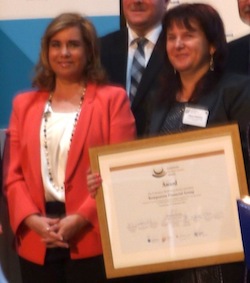MicroCapital: Please tell us about the theme of this year’s EUR 100,000 (USD 110,000) European Microfinance Award: serving people in post-disaster, post-conflict and fragile states.
Davide Forcella: This is a very timely issue because of the increasing frequency of microfinance institutions (MFIs) being forced to operate under very difficult conditions, due to both natural disasters and human conflict. The aim of the prize is to reward MFIs that

 The
The